Greetings, strange earthlings who have for some reason devoted your ragtag existences to the construction and appreciation of The Art! Last weekend, I had the good fortune of taking a brief trip to your planet to pass through the open studios of your debatably fine institution. I had not visited the School of the Art Institute of Chicago (SAIC) since 1990, when I was a sprightly 2,222 years of age, for the MFA show of your now-esteemed faculty member Eduardo Kac (Professor, Art and Technology Studies). Eduardo, as you know, is a great friend of mine.
After landing my Torpohedrapod XX™ in the nose-bone of Hans Haacke’s “Gift Horse,” currently on display on the roof of the Art Institute of Chicago, I stepped nimbly out of my craft. I then shapeshifted out of my standard floating microbead form and quickly assumed a human physique. I clothed myself in the typical garb of your people: an all-black outfit with wide-leg pants, a flowing button-down shirt with a tailored collar, and a pair of slip-on shoes with a strange blocky heel (known, I believe, as Mules, much like the variety of horse). I passed unseen through the halls of high culture, my nice heels clicking against the gleaming floors, and slipped down the steps and into the night.

Studio of Nick Bamford (MFA Sculpture 2020), photograph by Leah Gallant.

My first stops were the Basement and Mezzanine of the Columbus building. At first I thought it was my third cousin DroxxlChlorineBath in the corner of Nick Bamford’s studio (MFA Sculpture 2020), but then I realized it was just a sculpture of a giant Cheeto Puff balanced on a single crutch. In the center of the studio, another boulder-size Cheeto lay bisected. The skeleton inside implies the Cheeto is a mere pupae for a developing animal form. I don’t know what’s so appealing about this and I doubt the artist does either. Like an owl pellet or a geode, the mass-produced and now comically large form suggests an archaeology of a commodity, but what era of archaeologist I’m not certain.
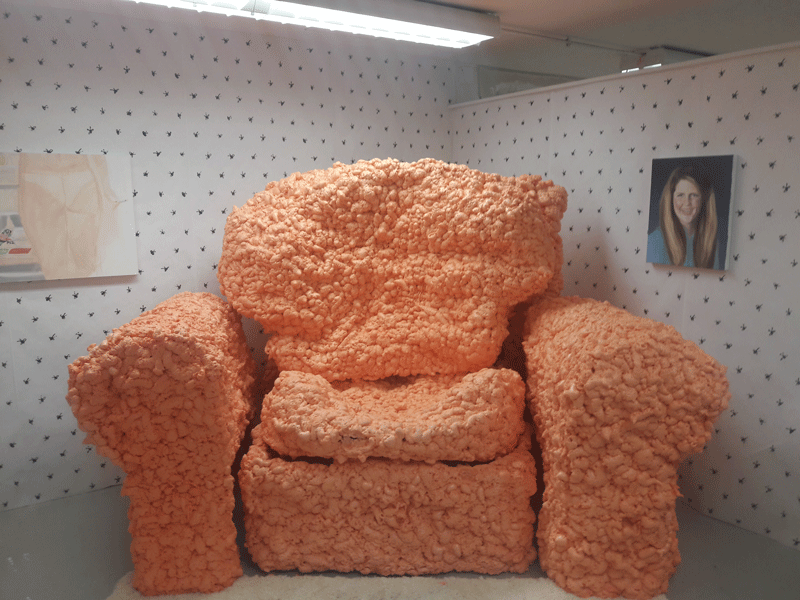
Also, I think that these Cheeto-beings would be very happy to rest their weary, ovoid bodies on a fine piece of furniture such as Liza Jo Eilers’ La-Z-Boy (MFA Painting and Drawing 2020).
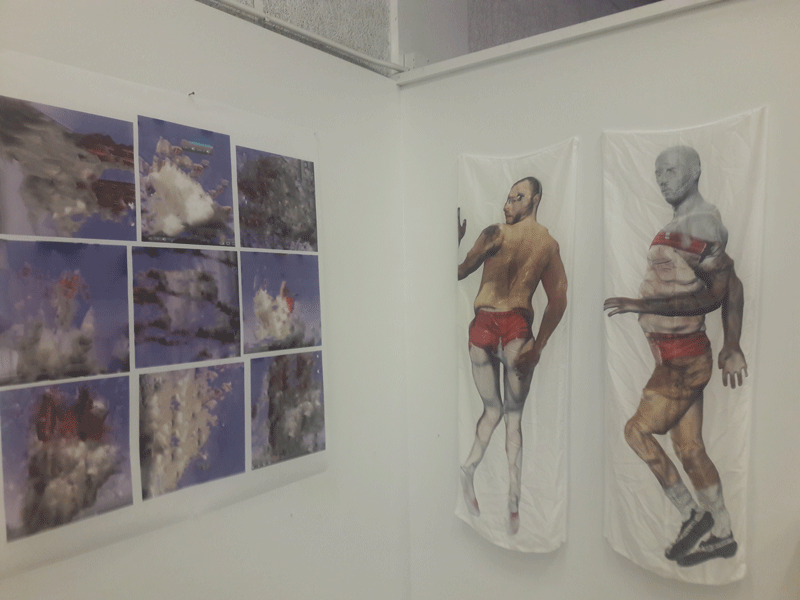
I am not sure that Andy Hunt (MFA Sculpture 2020) is human? This work reminds me of Pipilotti Rist as reinterpreted by a bro. The portraits of my people were excellent. I recognized myself in the inkjet-print photos on fabric of composite humanoid forms. Some are dancing and seen from the back. Some are marching in profile. Their thighs are very thick and some have the body parts of a CGI model.

Studio of Devon Sullivan (MFA Ceramics 2020). Photograph by Leah Gallant.
My “A Hitchhiker’s Guide to the Planet Earth” tells me that many contemporary artists work between disciplines because they are easily bored. Many painters, for example, are breathless with their concern to “take painting off the wall.” This recurring problem — of how to push the boundaries of gallery display for two dimensional forms — is much easier to deal with in outer space, where we simply throw our canvases into a black hole and never see them again.
However, even as painters are leaving the wall in droves, it seems that artists from other disciplines are also trying to put things ON the wall. Devon Sullivan (MFA Ceramics 2020) displays his ceramic kelp or vertebrate-like forms against painted backgrounds that edge towards installation. In one piece spanning the floor and the wall, the forms are clustered on a Kool Aid-red raw canvas. I hope he is thinking about making these way bigger and sillier à la Elizabeth Murray or late Frank Stella, although I hope he is able to sidestep the latter’s undue drama.
Be still, my eighteen beating hearts! The paintings of Leah Ke Yi (MFA Painting and Drawing 2020) are soft and studied objects of care. The greyish light and slight irregularities in her materials — frames that are imperfect rectangles, patchy tea-colored grounds — contribute to her subtle and haunting portraits, landscapes, and domestic interiors. These images are simultaneously nostalgic and urgent, like the last photograph taken of a recently dead family member. If I can hack into the security cameras in McLean from my home on KleenexClorox™, I look forward to watching over whatever this human artist makes next.
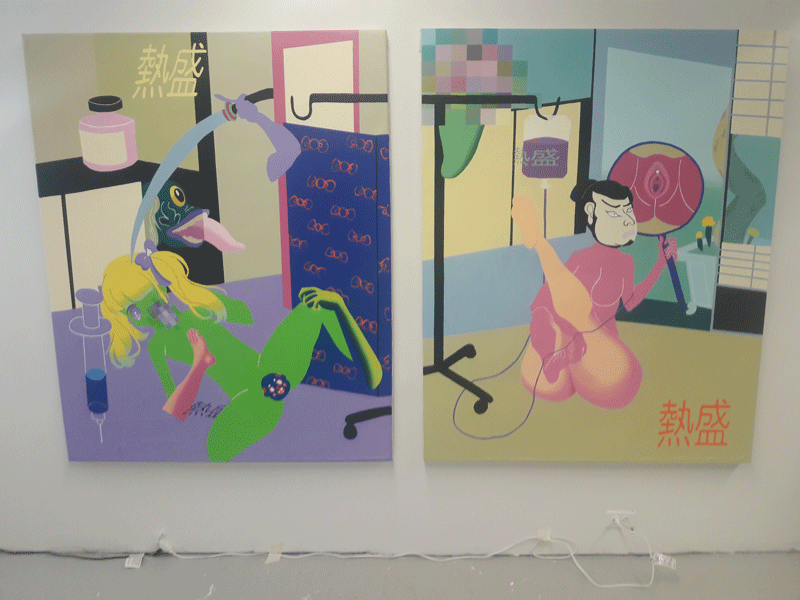
I found myself face to face with the large, Play-Doh-hued canvases of Skye Taniai (MFA Painting and Drawing 2019). It seems there is now a definitive shift away from Zombie Abstraction and towards the figurative. (It is funny to imagine that these naïve yet charming beings suppose this shift could signify anything other than the rumbling of of the art market’s stomach!) I was quite shocked at the brazen nudity of some of these young ladies, which was made more startling by the implied innocence of the pastel color palette. However, I was intrigued by their accessories and regions of partial pixelation. Using telepathy, I will suggest that Sumeire collaborate with Jonathan Korotko (MFA Printmedia 2019), whose delightful wiggly furnishings could easily inhabit the animation of Lisa Cruikshank.
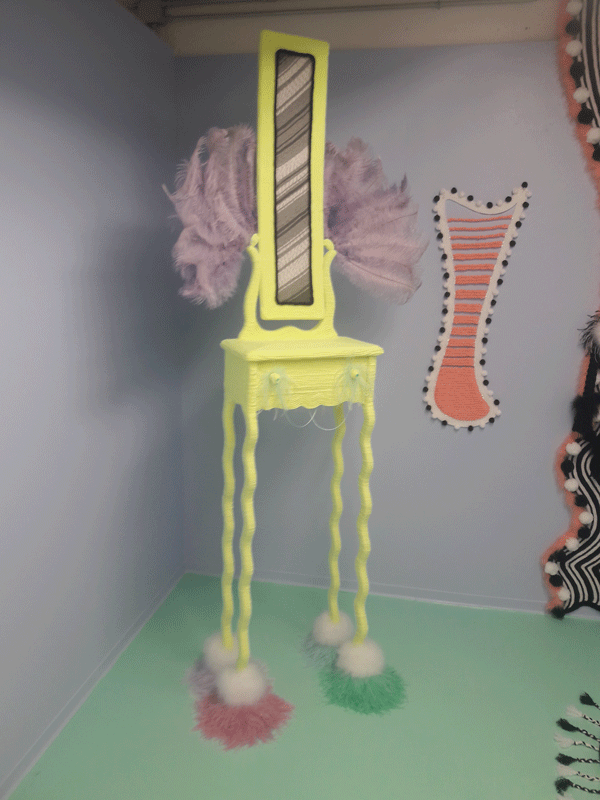
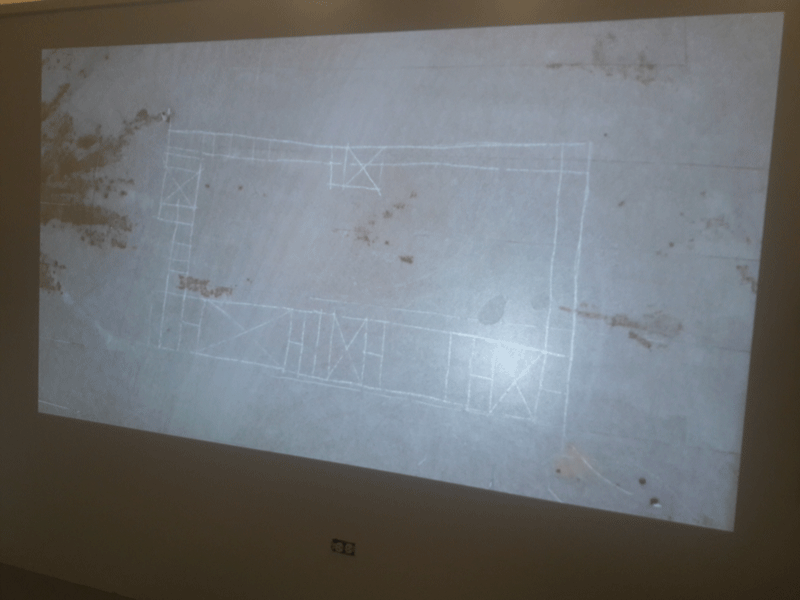
Ah! This work interested me immensely. Seomy Ahn (MFA Sculpture 2019) makes weavings of architectural plans for stairs, which are quite wonderous in their simplicity. The human species can barely conceive of four dimensions, let alone the infinite number we proud inhabitants of KleenexClorox™ dwell in. Although this work clearly demonstrates the lower intelligence of these beings, the translation of three-dimensional
architectural space into the flat space of a weaving is quite beauteous. I also enjoyed the video shot from bird’s eye view of the artist “mapping” or “drawing” a building plan in an empty parking lot with a sort of chalk-rolling device; the crawling of the puny figure reminded me of a show I curated not long ago in the Nazca Desert, Peru.
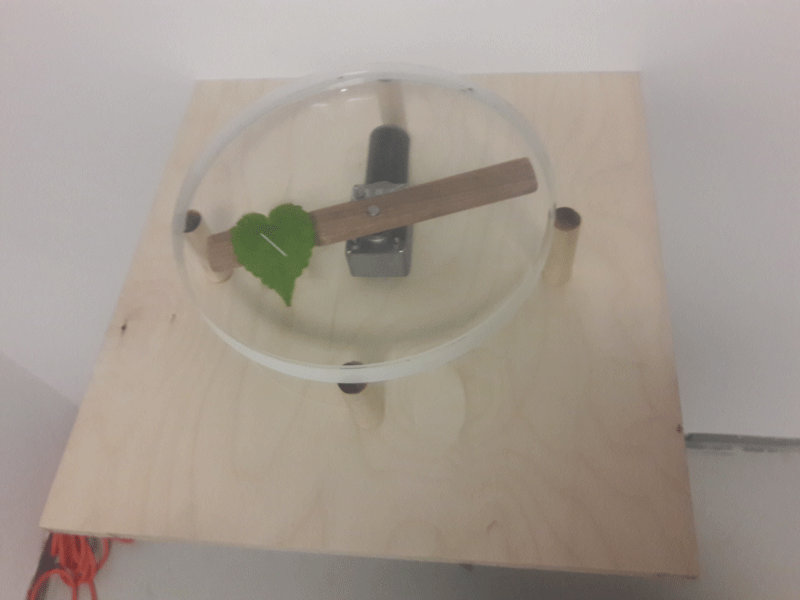
One of the reasons I so URGENTLY desired to see this planet was that my guidebook tells me it has a mere 12 years left in existence! The relationship of humans with nature is indeed a funny one — funny, at least, for someone like me whose fate is not intricately bound up with the Earth’s. I cannot think about the lovely little art-machines of Patrick O’Shea (MFA Art and Technology, 2020) without thinking of their opposite forms: the pumping arm of an oil drilling rig at work, for example, or any other machine that contains or devours any given natural resource. O’Shea’s machines meet the natural on the meekest and most lyrical of terms. In one, a single heart-shaped leaf — fresh-picked, presumably — trawls around in a circle, pulled by a rotating arm at the center of a round dish of water. Would that this foolish species operated with this level of care on its once-green planet!
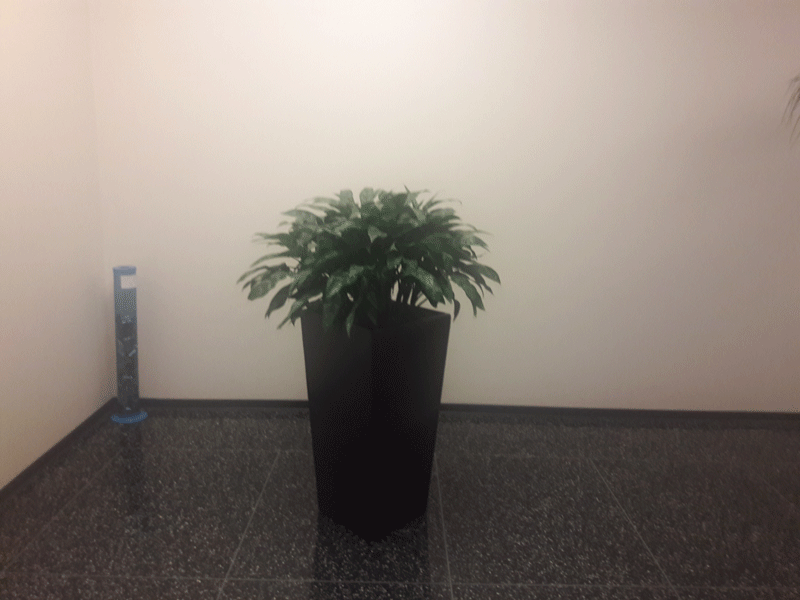
Of all the artworks I saw, this one, in the ground floor of the Sullivan Building, struck me as most indicative of the contemporary art of humankind. Not so long ago, half the planet was crazy for depicting the Christ, whose peaced-out surfer vibe made him a major social influencer for millennia after his death. Now, however, the houseplant is the central devotional figure of most artworks. In this participatory installation, a bluish canister which viewers can feed used batteries stands in the corner. An orange “Wet Floor” obelisk (not pictured) suggests the unseen labor of maintenance that characterizes the capitalocene. The marble floors recall both the First Style of Roman wall-painting (200 BC – 80 BC), in which murals were painted to resemble masonry, as well as the vanishing natural resources of this quaint little planet. Don’t be surprised if you soon start seeing this artist’s work cropping up everywhere.
I enjoyed my time viewing your Art Forms and snacking on your planetary delicacy, Potato Chips. If you are still here next year, I’ll be back!



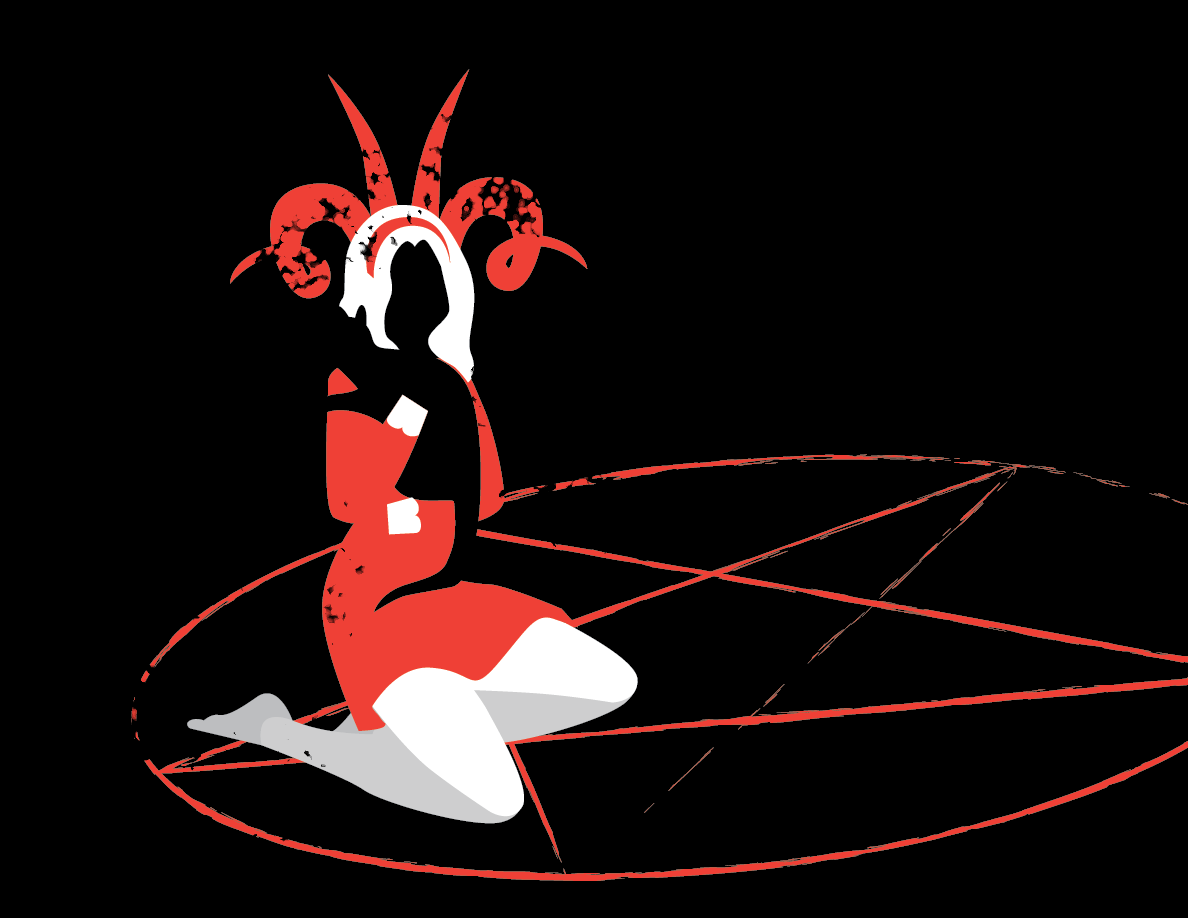




Wow! What a good grouping of artists. Came across this post by chance. Glad I did, thanks.